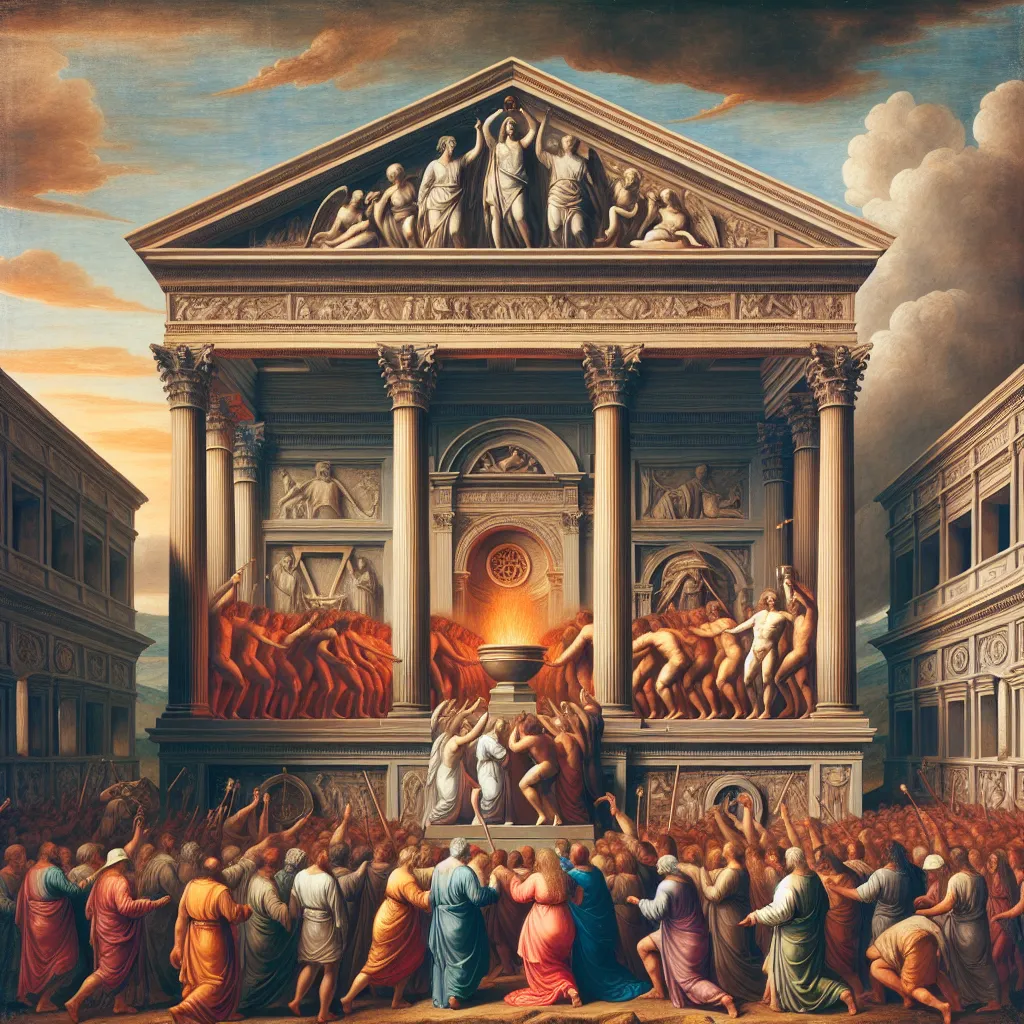
- Published on
- Authors

- Name
- You
The Gnostic Mass: The Central Rite of Thelema
The Gnostic Mass is a ceremonial magnum opus embedded deeply in the spiritual tradition of Thelema, a religion founded by the enigmatic Aleister Crowley. This rite, formally known as Liber XV, is a vibrant tapestry woven from the threads of esotericism, mysticism, and ancient wisdom. Let's embark on a journey to unravel its celestial significance and the spiritual alchemy it catalyzes.
Understanding Thelema
Thelema, derived from the Greek word meaning "will," is a spiritual philosophy emphasizing the sovereignty of individual will and the pursuit of one's true purpose. In the context of Thelema, the Gnostic Mass is not just a ritual but a microcosmic enactment of universal principles.
The Components of The Gnostic Mass
The Gnostic Mass is replete with intricate symbolism and profound meanings. Here's a breakdown of its key components:
| Component | Symbolism |
|---|---|
| The Officers | Priest, Priestess, Deacon, and Children represent different aspects of the self and cosmic principles. |
| The Temple Setup | Reflects the human soul and the universe. |
| The Eucharist | Represents spiritual nourishment and transformation. |
| The Ritual Gestures | Enact cosmic forces and channel divine energy. |
The Gnostic Mass and Symbolism
Symbolism is the heart of the Gnostic Mass, and every gesture, word, and item holds a deeper meaning.
The Altar and the Pillars
The altar stands as the axis mundi, the center of the world, connecting the terrestrial plane with celestial realms. The twin pillars represent dualities such as male and female, light and dark, reflecting the balance necessary for gnosis.
The Role of the Priest and Priestess
In a dance of cosmic energies, the Priest embodies the active principle (often associated with the Sun and the divine will), while the Priestess signifies the receptive principle (aligned with the Moon and sacred wisdom). Their interaction symbolizes the sacred marriage or Hieros Gamos, a union paving the way for spiritual enlightenment.
The Eucharist: Consummation of The Divine
A key highlight of the Gnostic Mass is the Eucharist, where consecrated wine and bread represent the flesh and blood of the divine. This act is not just symbolic but an invocation of deep gnosis, offering participants a taste of cosmic consciousness.
Attainment of Gnosis
Gnosis, the Greek word for knowledge, in Thelema is more than mere intellect. It is an experiential knowing, a recognition of the self as an expression of the divine. The Gnostic Mass serves as a beacon, guiding its practitioners toward this sacred realization.
The Science behind Spiritual Transformation
Delving into modern science, we find intriguing parallels with the mystical experiences induced by the Gnostic Mass. Quantum mechanics, for instance, reveals a universe where observer and observed are intertwined, echoing the mystical insight of the unity of all existence.
- Quantum Entanglement: Similar to the interconnectedness celebrated in the Gnostic Mass, entanglement showcases a deep connection between particles, which mirrors the spiritual bonds.
- Wave-Particle Duality: Just as the Priest and Priestess embody dual principles, wave-particle duality speaks of a fundamental duality intrinsic to the fabric of reality.
Conclusion: A Symphony of Science and Spirit
The Gnostic Mass stands as a luminous testament to the alchemy of spirit and matter, a ritual where ancient mysticism meets the revelations of contemporary science. It opens the pathway to gnosis, unifying the diverse facets of existence into a coherent whole.
Through the Gnostic Mass, Thelemites and curious seekers alike can explore the profound depths of their being, connect with the cosmic order, and ultimately awaken to their true will—a will that harmonizes with the rhythm of the stars.
